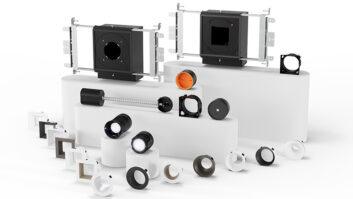On October 7, 1903, a large throng packed the banks of the Potomac River near Washington, D.C. The chilly and overcast weather that afternoon did nothing to dampen the sense of excitement that pulsed through the crowd. The spectators had flocked to the site to witness the much-anticipated flight of the Aerodrome, a revolutionary steam-powered flying machine pioneered by the famous scientist and engineer Samuel Langley.

With Langley’s assistant, Charles Manley, seated inside, the Aerodrome sat perched atop a houseboat affixed to a special catapult that would soon propel it airborne. One can only imagine the eagerness with which Langley, whose boasts in the media in the run-up to this day had done much to fan the flames of anticipation, watched on.
Sadly for Langley, his hopes for glory would soon be dashed. Immediately after liftoff, the 1000-pound aircraft wobbled, swayed, and promptly pitched over into the Potomac in full view of the crowd, creating a giant splash and throwing Manly, who narrowly avoided serious injury, from the cockpit. Widely reported in the press, the debacle dealt a major blow to Langley’s reputation.
Also by Jason Griffing: Hold Your Opinion
Meanwhile, far from the banks of the Potomac, two brothers from Dayton, Ohio, were quietly making progress on their own aviation project. The approach of Orville and Wilbur Wright could not have stood in more stark contrast to that of Langley. Langley’s approach was based on theoretical calculations and grand, sweeping ambition. The Wright Brothers, on the other hand, embraced practical experimentation and small, incremental improvements, starting with a series of gliders and kites that allowed them to study the principles of lift and drag at small and simple scales. They had even developed their own wind tunnel, providing them with a controlled environment in which to run their tests.
Just over two months after Langley’s failed attempt, on December 17, 1903, after years of experimentation and continual refinement, the Wright Brothers made their now famous flight at Kitty Hawk, N.C. Their so-called “Flyer” stayed aloft for just 12 seconds and covered a distance of 120 feet. And although it now represents a seminal moment in aviation history, no crowds were present and the flight was scarcely reported in the media. The flight that day was, after all, just one more in a long string of incremental milestones in the Wright Brothers’ famed aviation journey.
Like Langley, there’s a part of all of us that wants the grandiose solution. The home run swing. The knockout punch. Particularly when it comes to the biggest challenges we face in our businesses. Perhaps you want to reinvent your sales process, implement a new service program, or create a succession plan. Maybe you’re looking to expand into new product categories, land several major new accounts, or move into a new vertical. For most teams, even pursuing singular, sweeping changes in such situations can be paralyzing. And even if you manage to push through the overwhelm, the odds of success when applying such a strategy to complex problems are low. It’s more likely that you’ll end up like Langley, crashing your proverbial Aerodrome into the Potomac.
Also by Jason Griffing: Stay Close to the Action
Instead of chasing the Eureka Moment, we’re better off drawing inspiration from the Wright Brothers. Embrace “radical incrementalism” — a strategy that focuses on small, thoughtfully selected steps designed to improve our understanding and continually refine our approach as we build. Break the problem down. Start by asking yourself a few simple questions:
- How can we generate some small wins?
- How can we run small experiments that will help us gather vital experience and real-world learnings?
- What simple version of this solution could we implement that will allow us to pit our assumptions against actual market feedback?
Leveraging radical incrementalism in this way helps us generate momentum, moves us quickly from theoretical to practical knowledge, and validates early and often whether we’re on the right track.
Success in life and in business is rarely found in the dramatic breakthrough. Instead, it results from the daily grind. The consistent effort. The unwavering commitment to incremental improvement. So, the next time you are facing a difficult challenge, remember the approach of the Wright Brothers — think big, but start small.







